A project for the generations
Global climate protection and the associated decarbonization measures are gaining momentum. And it’s not only at the political level: as investors steer global money toward green technologies, entire industries are undergoing fundamental change. For hydrocarbon-dependent process industries, this brings both new challenges and major opportunities. We take stock of the situation.

of the emissions reductions in cement, steel and chemical manufacturing could be achieved through carbon capture, utilization and storage (CCUS) by the year 2070.
Geothermal / Tidalpowerplants, CCUS
This is based on assumptions by the International Energy Agency (IEA) that many of the projects planned around the world will be integrated into industrial hubs that capture CO2 from multiple plants linked by common CO2 transport and storage infrastructures. That makes CCUS one ray of hope among the less prevalent climate-friendly solutions. Geothermal energy – the use of heat from inside the Earth – is developing slowly on a global basis according to the IEA. It is a similar story with tidal power plants, of which only six are in operation worldwide. The reasons include high investment costs and complex construction processes.

– that’s how much capacity from solar and wind energy sources will have to be installed each year starting in 2030 to achieve ‘Net Zero 2050’.
Solar and wind power
One-fourth of that figure was installed in 2020, a record year to date. This is according to estimates from the International Energy Agency (IEA). One development nevertheless offers hope that it’s working: in countries that together account for half the world’s population, the production cost of wind and solar energy fell below that of electricity from fossil fuel sources in the year 2021. This includes major CO2 emitters such as China, India and many EU countries. A significant side effect is that thanks to cost-effective photovoltaics, since 2016 around 250 million people worldwide have had electricity for the first time without a direct connection to the grid. The fastest-growing energy sector in the world is wind power, but acceptance problems are still causing it to lag behind the expansion goals in places such as Europe. China built the most wind power plants worldwide in 2020, while the US is anticipating a boom in the offshore wind farm industry by 2024.
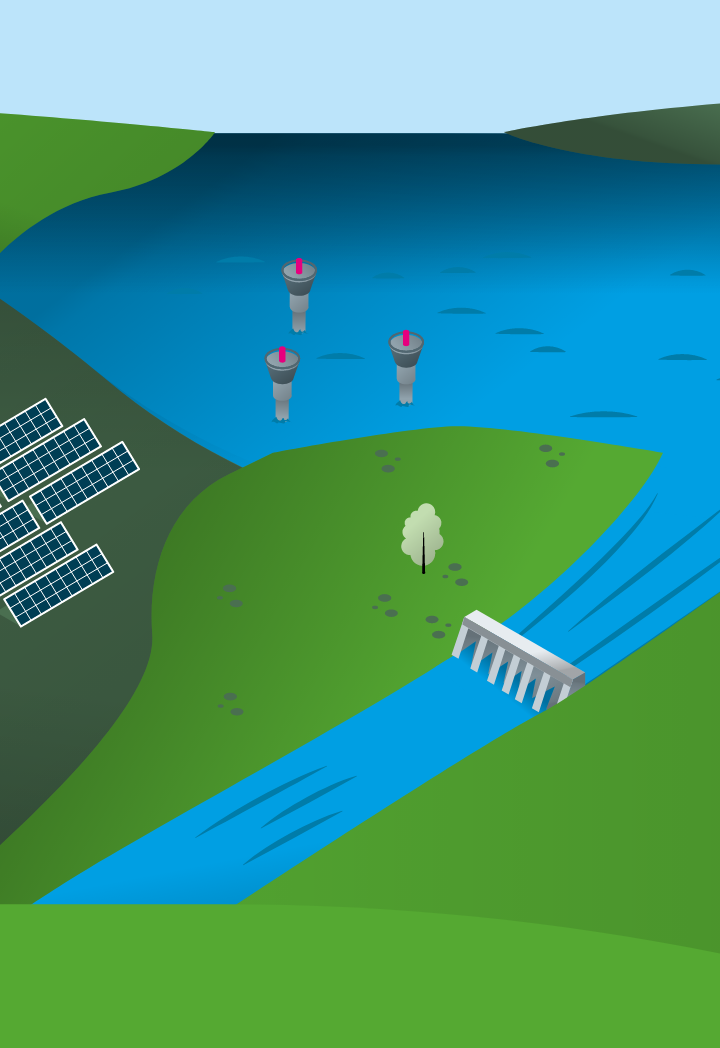
of the world’s energy demand was covered by hydroelectric power in 2020.
Hydropower
The installed capacity of these plants totals 1,211 gigawatts worldwide, making hydroelectric the global front-runner among renewable energy sources. Reservoirs and rivers are used for direct generation, while pumped storage plants accumulate kinetic energy by raising water to a higher-altitude reservoir. The country with the world’s largest installed hydroelectric capacity is China. Across the globe, thousands of reservoirs and dams that are currently unequipped with water turbines offer considerable growth potential for hydroelectric power. However, more frequent drought periods in recent years have created problems for water as a power-generation resource.
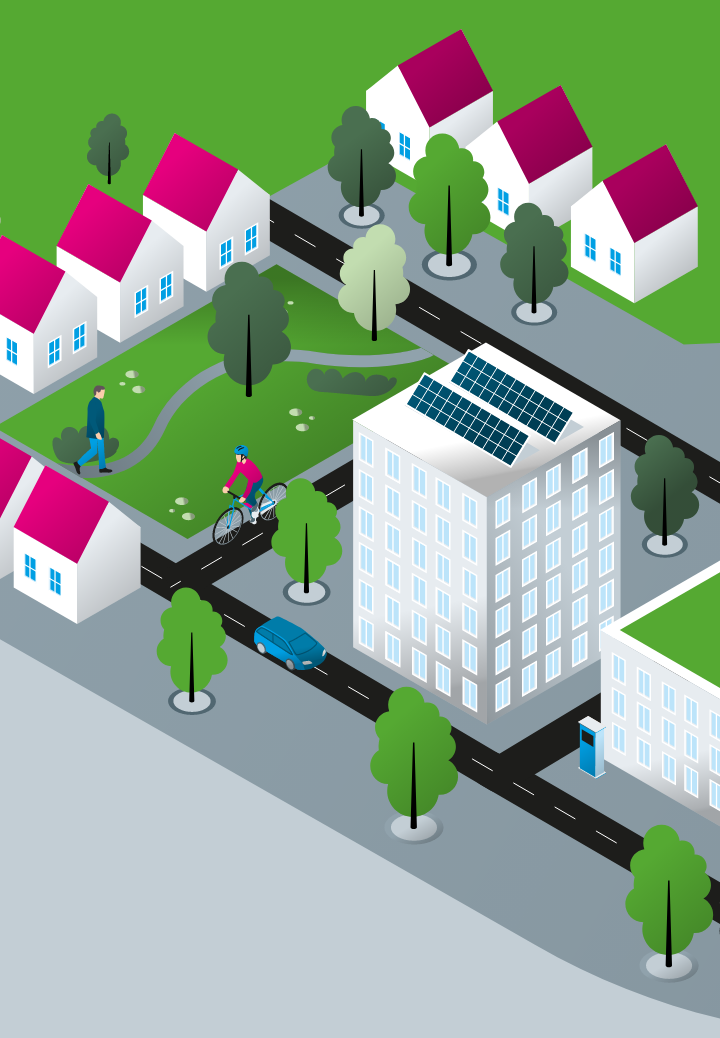
of worldwide energy consumption and more than 70% of CO2 emissions are attributed to cities.
Habitation, cities
Whether humankind can accomplish the mammoth project of energy transition is, therefore, an urban question – especially considering that populations in urban centers are set to double by the year 2050. A modern, climate-neutral city will need to draw on a wide range of solutions. For example, more efficient buildings and urban infrastructure reduce energy demand. On the energy generation side, one way is to pivot from coal to gas-fired cogeneration plants or high-efficiency combined cycle gas and steam turbine plants. Other approaches for reducing greenhouse emissions include a good public transportation infrastructure, as little individual transportation as possible (but electrified), multi-purpose utilization of land and other surfaces – such as installing solar facilities on buildings – or even vertical farming projects.

more energy storage capacity than in 2018 is anticipated worldwide by the year 2038.
Energy storage
2,800 gigawatt-hours is the figure estimated by Bloomberg New Energy Finance. The storage landscape will also become more diverse. Highly responsive short-term storage alternatives such as utility-scale battery systems, compressed air storage or pumped storage power stations can accumulate and deliver energy multiple times a day. They are normally used to balance out fluctuation patterns, such as those that arise with photovoltaic systems. Long-term storage systems with significantly higher capacity, such as heat storage, largescale storage power stations or chemical storage (power-to-gas), serve as seasonal back-up. Hopes are resting on power-to-gas technology, especially with hydrogen as the end product, as it offers advantages such as possible long-term storage, fuel cell-based regenerative power or use as a raw material by the chemical industry.
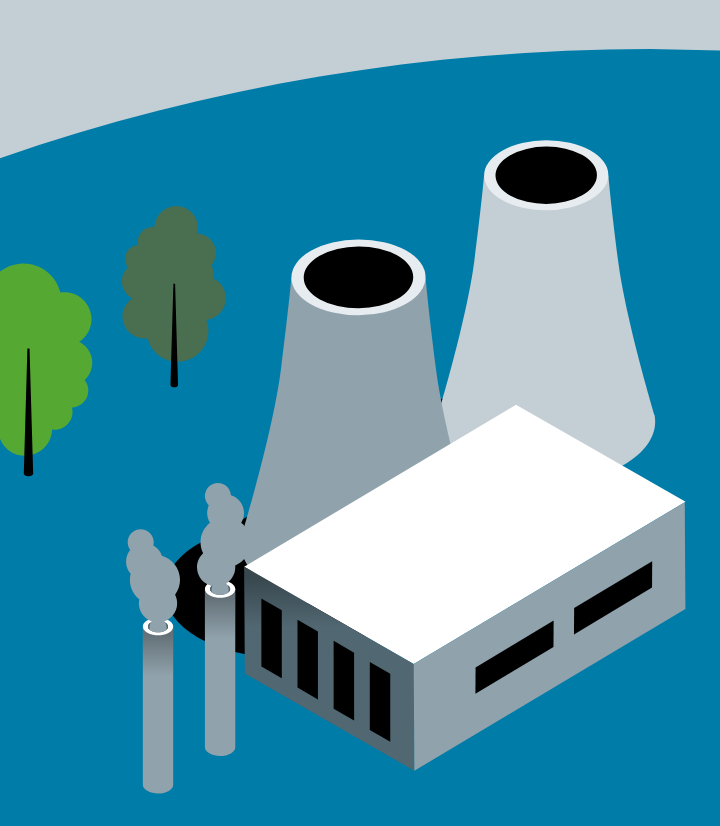
of worldwide energy demand and one-fourth of global CO2 emissions stem from industry.
Industry
When it comes to defossilization, energy-intensive sectors such as cement, steel and petrochemicals face enormous challenges. Those entail optimizing legacy plants, combining fuels and technologies or substituting feedstocks such as coal with gas. Where low-emission technologies are unavailable, methods such as CO2 capture represent an option. Many industrial processes can only be made climate-friendly through efficiency improvements and the use of green hydrogen. But it will be required in gigantic quantities and consume vast amounts of electricity. This too is a factor in McKinsey analysts’ estimate that by the year 2050, industry will need twice the energy it does today.
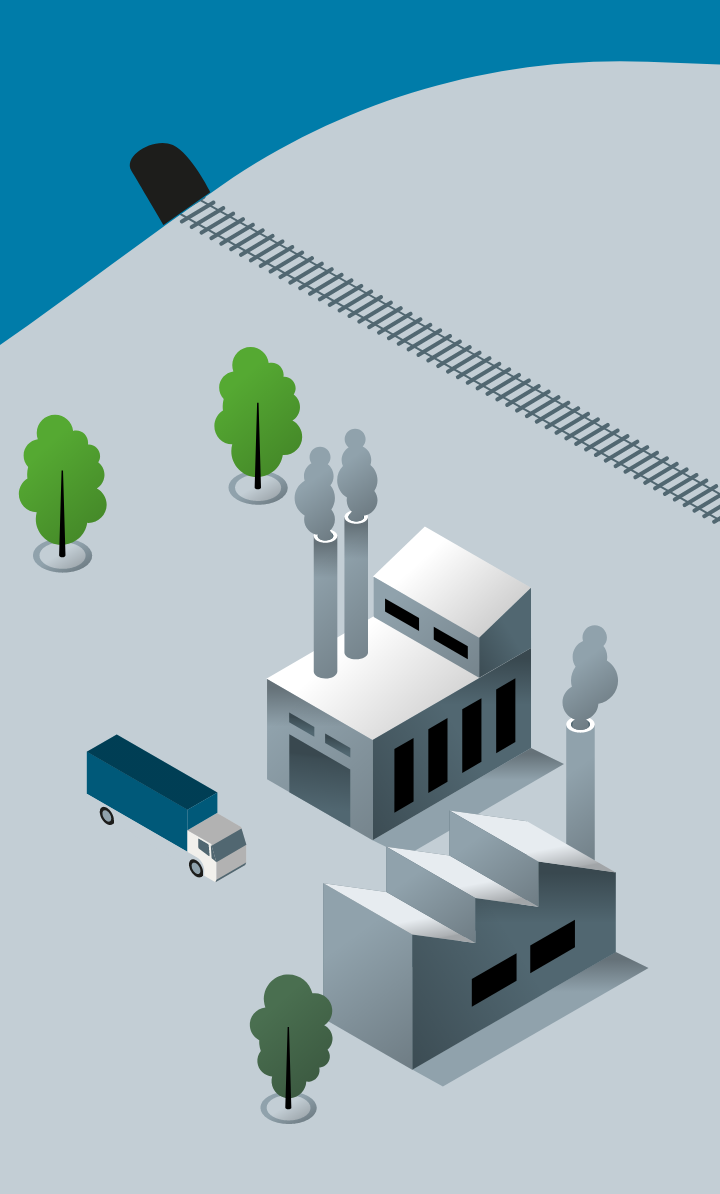
of worldwide CO2 emissions from fuel combustion are attributed to passenger and freight transport.
Transportation
It’s also the sector with the lowest share of renewable energy sources – and thus offers the greatest CO2 reduction potential. In order to transition the transportation sector, the high amount of energy delivered for end consumption must be curtailed without restricting mobility, plus the required energy must be generated from renewable sources. In the medium term, and from a global perspective, all forms of energy will play an important role: electricity, especially for electrified small vehicles and rail systems, together with hydrogen, e-fuels, biofuels and biogas for use in commercial vehicles and aviation, for example, where high energy density and greater operating range are crucial.
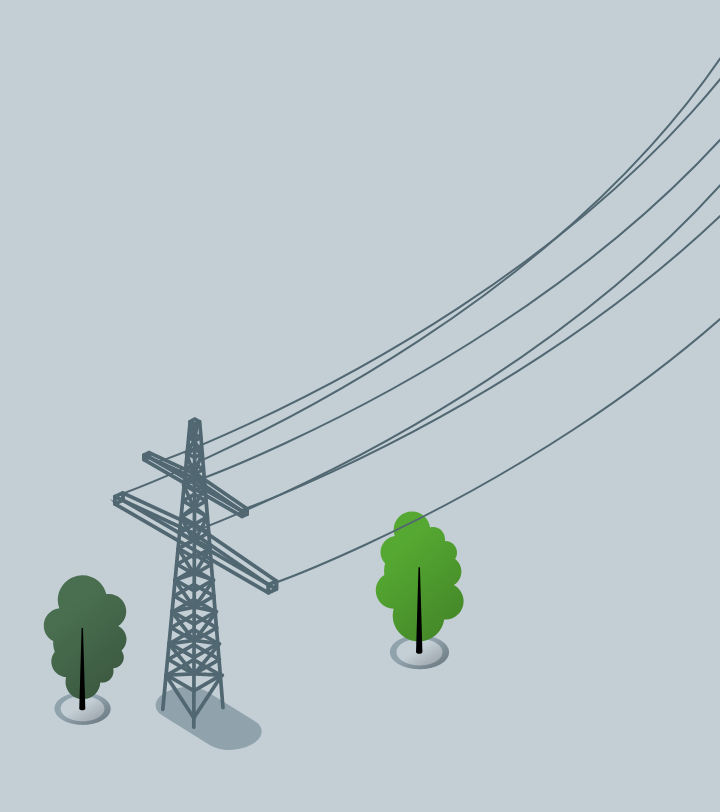
is the minimum that needs investing in the global grid infrastructure and power system flexibility by the year 2050 in order to get these in shape for a 2-degree scenario.
Grids
To date, most power is centrally generated and flows down virtually one-way streets. In the new energy landscape, electricity moves in all directions through hundreds of thousands of small and decentralized plants. Sensors and smart meters provide load information and control options for producers and consumers alike. Private households, municipal consumers, charging stations and storage systems can thus be integrated into a smart grid. Storage and heat pump networks or cogeneration plants can help to balance out fluctuations under conditions of heavy load.

countries are seeking to develop new nuclear power programs, according to the International Atomic Energy Agency (IAEA).
Nuclear Power
And that’s despite all the risks and costs in perpetuity. The global climate debate is boosting the technology’s comeback: “No stable energy supply without nuclear energy,” argues the IAEA. The leading nuclear energy producers are currently the US (94 reactors), France (56 reactors) and China (50 reactors). 442 active nuclear reactors around the world provide 10 percent of the global electricity supply. From an international perspective, the technology’s future seems more open than ever, especially for base load power stations.

less energy from coal will be needed by the year 2030, depending on the scenario.
Conventional power plants
Phasing out coal is considered the quickest way to significantly reduce CO2. For this reason, every climate-protection scenario envisages phasing out old smokestacks, just at differing paces. But the process also poses risks to energy supply security, plus coal is still indispensable for many national economies. 200 coal-fired plants are now under construction in China alone. India is planning 28 new plants on top of the 280 currently in operation. Solutions for a future of new, more efficient coal-fired power plants include increased reliance on cogeneration units and CO2 capture.
Published 01.02.2022, last updated 20.06.2022.
Dive into the world of the process industry through new exciting stories every month with our «changes» newsletter!









